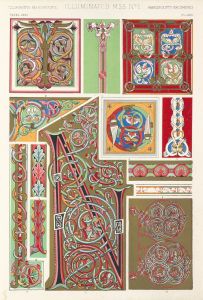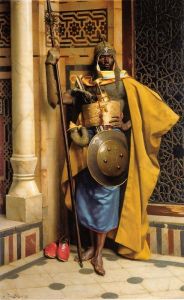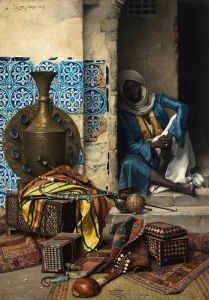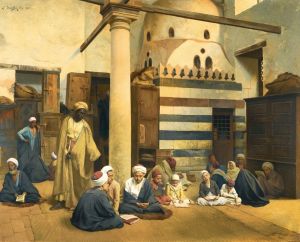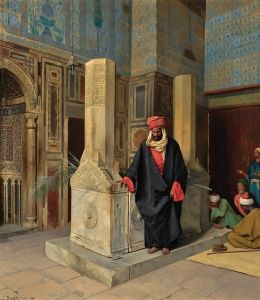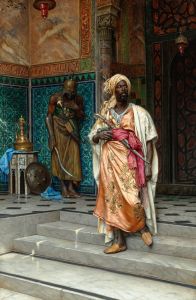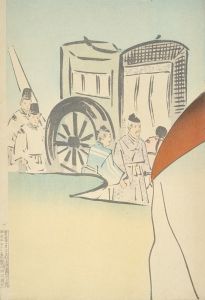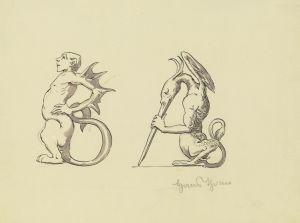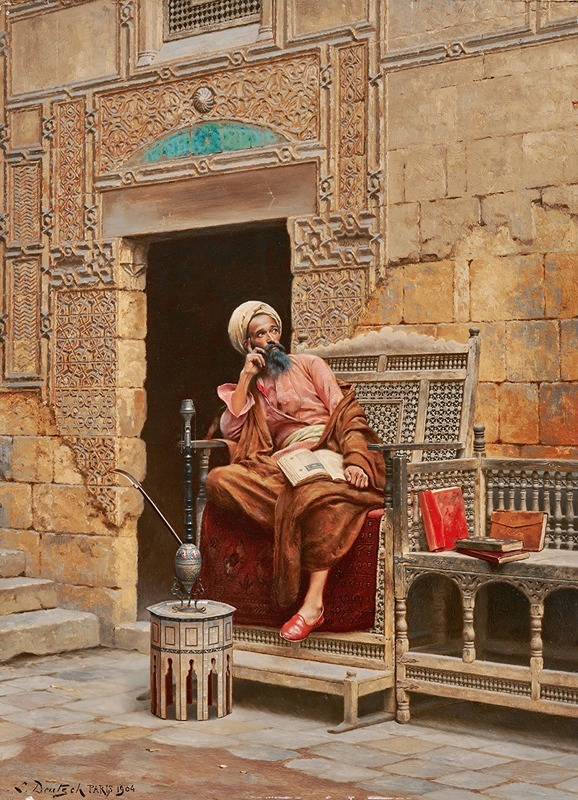
The Scribe
A hand-painted replica of Ludwig Deutsch’s masterpiece The Scribe, meticulously crafted by professional artists to capture the true essence of the original. Each piece is created with museum-quality canvas and rare mineral pigments, carefully painted by experienced artists with delicate brushstrokes and rich, layered colors to perfectly recreate the texture of the original artwork. Unlike machine-printed reproductions, this hand-painted version brings the painting to life, infused with the artist’s emotions and skill in every stroke. Whether for personal collection or home decoration, it instantly elevates the artistic atmosphere of any space.
Ludwig Deutsch was an Austrian painter known for his Orientalist works, and "The Scribe" is one of his notable paintings. Deutsch was born in Vienna in 1855 and later moved to Paris, where he became part of the Orientalist movement, which was characterized by Western artists depicting scenes from the Middle East, North Africa, and Asia. This movement was fueled by a fascination with the exotic and the unknown, often romanticizing and idealizing the cultures depicted.
"The Scribe," painted in 1911, is a quintessential example of Deutsch's meticulous attention to detail and his ability to capture the essence of the scenes he portrayed. The painting depicts a scribe, a common subject in Orientalist art, as scribes were considered essential figures in the administration and culture of the Islamic world. They were responsible for writing and copying manuscripts, maintaining records, and often played a crucial role in the dissemination of knowledge.
In "The Scribe," Deutsch presents the figure seated in a richly decorated interior, surrounded by various objects that suggest a setting of learning and culture. The scribe is depicted in traditional attire, with a focus on the intricate patterns and textures of the fabric, which is a testament to Deutsch's skill in rendering materials and surfaces. The background is adorned with Islamic architectural elements, such as ornate tiles and arches, which add to the authenticity and allure of the scene.
Deutsch's work is characterized by its photographic realism, achieved through his use of vibrant colors and precise brushwork. He was known to collect artifacts and photographs from the regions he depicted, which he used as references to ensure accuracy in his work. This dedication to detail is evident in "The Scribe," where every element, from the scribe's focused expression to the delicate calligraphy tools, is rendered with precision.
The painting reflects the Orientalist fascination with the 'Other,' a term used to describe the Western perception of Eastern cultures as exotic and fundamentally different. While Orientalist art has been critiqued for its stereotypical and sometimes patronizing portrayals, it also provides insight into the historical context of the time, revealing the complexities of cultural exchange and the Western imagination.
Deutsch's "The Scribe" is held in high regard for its artistic merit and is considered a significant example of Orientalist art. It captures a moment in time with a sense of reverence and admiration for the subject, showcasing Deutsch's ability to blend realism with the romanticized vision of the East that was prevalent among Western artists of his era.
In summary, "The Scribe" by Ludwig Deutsch is a masterful representation of Orientalist art, highlighting the artist's technical prowess and his engagement with the cultural themes of his time. Through its detailed depiction of a scribe in an opulent setting, the painting continues to captivate audiences and serves as a window into the artistic and cultural dialogues of the early 20th century.






